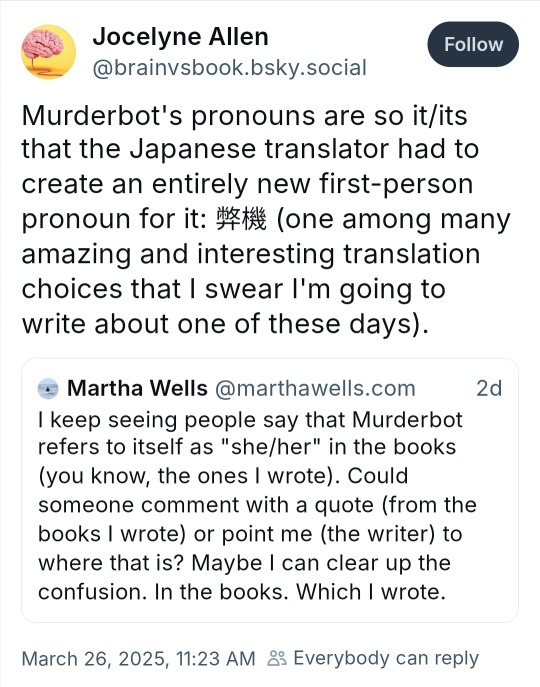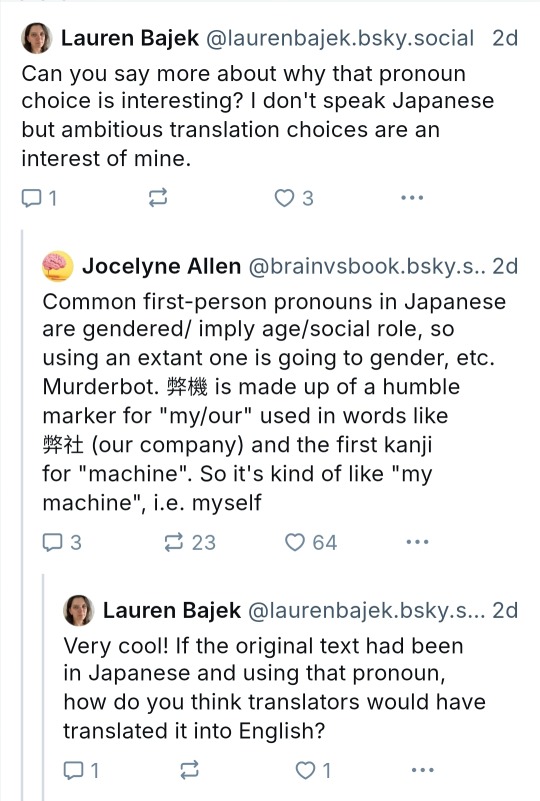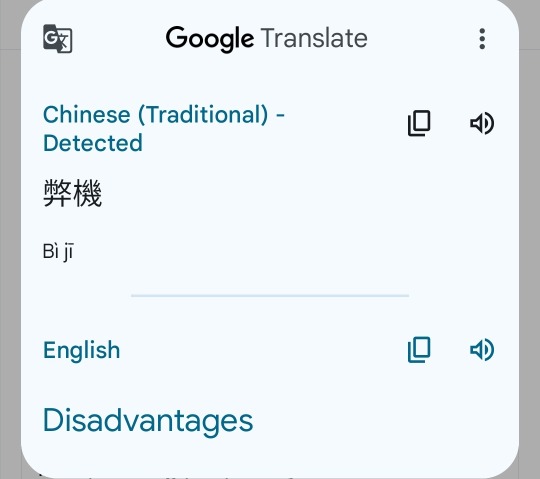Words that give an insight into Japanese culture ~~All calligraphy by me unless stated~~ Click here to visit my Etsy shop to see ready-made and custom-made calligraphy artworksClick here to visit my homepage for more info on Japanese calligraphy
Don't wanna be here? Send us removal request.
Photo

(ひっさ〜!さんはTwitterを使っています: “@sakuragi_sayumi 二度見_ウコンの力でやってはいけない表示を発見!そういう味しか連想できない(笑)お買い得品でも購入を渋りそう~ http://t.co/FLlT9LADnw”から)
63 notes
·
View notes
Text
間 (ma) “emptiness, space, interval”

I told Miyazaki I love the “gratuitous motion” in his films; instead of every movement being dictated by the story, sometimes people will just sit for a moment, or they will sigh, or look in a running stream, or do something extra, not to advance the story but only to give the sense of time and place and who they are.
“We have a word for that in Japanese,” he said. “It’s called ma. Emptiness. It’s there intentionally.”
Is that like the “pillow words” that separate phrases in Japanese poetry?
“I don’t think it’s like the pillow word.” He clapped his hands three or four times. “The time in between my clapping is ma. If you just have non-stop action with no breathing space at all, it’s just busyness, But if you take a moment, then the tension building in the film can grow into a wider dimension. If you just have constant tension at 80 degrees all the time you just get numb.”
Which helps explain why Miyazaki’s films are more absorbing and involving than the frantic cheerful action in a lot of American animation. I asked him to explain that a little more.
“The people who make the movies are scared of silence, so they want to paper and plaster it over,” he said. “They’re worried that the audience will get bored. They might go up and get some popcorn.
But just because it’s 80 percent intense all the time doesn’t mean the kids are going to bless you with their concentration. What really matters is the underlying emotions–that you never let go of those.
— Roger Ebert in conversation with Hiyao Miyazaki
#japanese language#japanese culture#japan#japanese#書道#japanese calligraphy#calligraphy#japanese art#kanji#japanese langblr#hayao miyazaki#ghibli
97 notes
·
View notes
Text
か〜〜〜〜〜わ!

@daily-hyosatsu @japanwords thought you two might get a kick out of this bit of typography :)
22 notes
·
View notes
Text
I love reading about these kind of translation decisions.
I've only ever seen 弊 used to refer to one's company: 弊社, as the article says.
I've been told 弊 is used to refer to one's own something, and it has a very humble nuance.
So 弊機 translates to something like "I, your humble machine" or "I, who am but a mere machine".
Japanese is great that it can say so much with simple pronouns.



link: https://bsky.app/profile/brainvsbook.bsky.social/post/3llc72lyhu22j
google translate defaulting to chinese at first

okay but for those of us with interests in both the murderbot and the daomu biji fandoms this is kinda hilarious
(english-side-only really, i get that the kanji and hanzi are completely different)

our good (air)ship murderbot! thanks google
6K notes
·
View notes
Text
Onoré-sho (writing as one likes)

Here's an example of a Japanese calligraphy style that's easy to do!
The style is called "onoré-sho".
"Onoré" is an old-fashioned and rather forceful way to refer to oneself.
Onoré-sho emphasises a sense of freedom, doing things in one's own way.
With onoré-sho the artist is free to play around with the relative size, shape and orientation of the characters, and even of the components within each character.
The only real guideline is that the characters fit together like a puzzle.
The end result is that it can be difficult to read at first glance - like a puzzle.
Can you read the example above?
#japanese language#japan#japanese culture#書道#japanese#japanese calligraphy#calligraphy#japanese art#kanji#japanese langblr
37 notes
·
View notes
Text
臥虎藏龍 "Crouching Tiger, Hidden Dragon"

This Chinese idiom describes a place that is full of talented or extraordinary people who remain hidden and undiscovered.
It's also the name of the 2000 Chinese martial arts movie starring the talented and extraordinary Michelle Yeoh!
#japanese language#japan#japanese culture#書道#japanese#japanese calligraphy#calligraphy#japanese art#kanji#japanese langblr#idioms#yojijukugo#4 character idiom
25 notes
·
View notes
Text
気 (ki) "energy" / "life-force" / "spirit"

Japanese martial arts practitioners often give a loud quick shout as they perform an attacking move.
This shout is a 気合 (ki-ai), often translated as “meeting of spirit”.
This ki is the ki in aikido, qigong, and reiki.
Ki is a central principle in traditional Chinese medicine and Eastern martial arts.
It has been translated variously as energy, life force, vital energy, spirit.
It is believed to be the essence of life.
Eastern health practices such as qigong, taichi and acupuncture are believed to balance and encourage the flow of ki to create a healthy mind and body.
This artwork is available on my Etsy shop here.
#japanese language#japan#japanese culture#書道#japanese#japanese calligraphy#calligraphy#japanese art#kanji#japanese langblr
51 notes
·
View notes
Text
卯月(uzuki) "April" (archaic)

Like many countries, Japan uses a 12-month calendar. The names are very simple. January is literally "Month One", February is "Month Two", etc:
一月 = January
二月 = February
However, before the Meiji Restoration (mid-1800s) it was common to use an older 12-month system. These months’ names referenced the weather and the seasons (similar to the French Revolutionary calendar).
April is 卯月.
月
Japanese learners will recognise the kanji 月 as "moon" or "month".
卯
The first kanji is less common. It is most often used to represent the Sign of the Rabbit in East Asian Horoscopes, and the Year of the Rabbit uses this sign too.
So what is the connection between April and rabbits?
Of course in Western countries there’s the familiar symbol of the Easter Bunny, and in springtime hares can be seen racing around the fields (the famous “mad March hare”).
Unfortunately 卯 might not refer to rabbits at all. It is believed that this kanji was originally 植, which has the same sound. 植 is the kanji for “planting”and refers to rice planning, an important event carried out every spring throughout Japan.
#japanese language#japan#japanese culture#書道#japanese#calligraphy#japanese calligraphy#japanese art#kanji#japanese langblr
66 notes
·
View notes
Text
限 (gen) "boundary, limit"

We tend to think of creativity as something that is free from limits.
But what if the opposite was also true?
The benefit of working within limits is that it is precisely the act of pushing against these limits, stretching them, bending them, playing with them, which leads to interesting artistic expression.
In other words, in order to push boundaries, there have to be boundaries existing in the first place.
Johann Wolfgang von Goethe agrees: “To achieve great things we must be self-confine: mastery is revealed in limitation.”
This is especially evident in Japanese calligraphy; as an artform it is incredibly restrictive. Boundaries are clear and unequivocal. Thus the effect is all the more powerful when a calligraphy artist successfully transcends these boundaries, expressing Japanese characters in an original and moving way.
#japanese language#japanese culture#書道#japan#japanese#japanese calligraphy#japanese art#calligraphy#kanji#japanese langblr#creativity
46 notes
·
View notes
Text
無限 (mu-gen) "unlimited / no limits"

The idea of no limits, or infinity, can represent divine eternal consciousness. It is an important concept in Buddhism, often represented by an endless knot that is strikingly similar to Celtic designs.
It can also represent samsara, the endless cycle of death and rebirth.
It is similar to the symbol of the ouroboros - the snake swallowing its own tail - which is found in Western mysticism.
#japanese language#japanese culture#書道#japan#japanese#japanese calligraphy#japanese art#calligraphy#kanji#japanese langblr#buddhism#mugen
193 notes
·
View notes
Text
春分 (shun-bun) "Spring Equinox"

In Japan, 春分 (shun-bun) spring equinox is a national holiday. The week which contains spring equinox is called “o-higan”. This has connections with Buddhism, and on this day many people visit spend time with their families and visit their family grave.
“Bota-mochi” (rice cake covered in sweet bean paste) is traditionally eaten on this day.
#japan#japanese#buddhism#Japanese culture#kanji#kanji art#calligraphy#asian calligraphy#calligraphyart#japanese langblr#書道#書道アート
92 notes
·
View notes
Text
彗星 (suisei) comet

Those of you who like to learn Japanese through watching anime will recognise 彗星 from the movie "Your Name" (君の名は, Kimi no na wa).
Whilst I love that movie, I wrote this word purely because I love the first kanji 彗.
When I first saw it I was surprised I'd never encountered it before. It's one of those kanjis that you see so rarely, but it feels like you should see it more often because it's so simple.
By itself, this first kanji 彗 is a lesser-used alternative kanji for ほうき, meaning "broom", a word I distinctly remember first learning from another famous anime movie, 魔女の宅急便 (Kiki's Delivery Service) !
#japanese language#japan#japanese culture#書道#japanese#japanese calligraphy#calligraphy#japanese art#japanese langblr#kanji
43 notes
·
View notes
Text
起死回生 (kishikaisei) recovering from a hopeless situation

起死回生 = recovering from a hopeless situation
起 = to get up
死 = death
回 = revolve
生 = life
One of the first calligraphy works I posted online, I like the message of hope in this idiom.
This is a special kind of Japaneses idiom known as a 四字熟語 (よじじゅくご、yo-ji-juku-go), or 4-character idiom. As the name suggests, these are idiomatic phrases made of 4 kanji.
They often contain a small life lesson or moral message, similar to English sayings such as “you reap what you sow” and “the early bird gets the worm”.
#japanese language#japan#japanese culture#書道#japanese#japanese calligraphy#calligraphy#japanese art#kanji#japanese langblr#yojijukugo#idioms#japanese idioms#4 character idioms
73 notes
·
View notes
Text
禅 Zen

"There is no way to enlightenment; enlightenment is the way".
Thich Nhat Hanh, Zen Master
This one-off calligraphy work is available on my Etsy store here
#japanese language#japan#japanese culture#japanese#書道#japanese calligraphy#calligraphy#japanese art#kanji#japanese langblr
21 notes
·
View notes
Text
夢 (yumé) "dream"

Do you remember your dreams?
According to Japanese tradition, the things you dream about in your first dream of the new year can foretell what's going to happen in the coming year.
It is believed that the 3 most auspicious things to dream of are:
Mount Fuji 🗻
A hawk 🦅
An eggplant / aubergine 🍆
So if you dreamt of a hawk eating an eggplant on top of Mount Fuji on January 1st, you're bound to have a good year!
The artwork in the photo is an original one-off and is available on my Etsy site here
#japanese language#japan#japanese culture#書道#japanese#japanese calligraphy#calligraphy#japanese art#kanji#japanese langblr#dreams
31 notes
·
View notes
Text
弥生 (yayoi) "March" (archaic)

Like many countries, Japan uses a 12-month calendar. The names are very simple. January is literally "Month one", February is "Month two", etc.
However, before the Meiji Restoration (mid-1800s) it was common to use an older 12-month system. These months’ names referenced the weather and the seasons (similar to the French Revolutionary calendar).
March is:
弥 = increasingly
生 = life
In other words, "the month with increasing new life". This befits the time of year when it is spring in the Northern hemisphere, and Japan enjoys beautiful spring blossoms such as cherry blossom and plum blossom.
It is also first name of the artist 彌生草間 (Yayoi Kusama). Her name uses the older, more complex version of the 弥 kanji: 彌.
#japanese language#japan#japanese culture#書道#japanese#japanese calligraphy#calligraphy#japanese art#kanji#japanese langblr
88 notes
·
View notes
Text
雛 (hina) "hina doll" 🎎

Hina dolls are ornamental dolls which represent traditional Japanese Imperial court members, such as the Emperor, Empress, and attendants.
They're best known as the decorations for the Japanese Girls' Day celebration, which took place yesterday.
In fact, Girls' Day is known in Japanese as ひな祭り (Hina Matsuri) "The Hina doll festival".
Families often display large sets of Hina dolls, arranged on steps. You can see them in department stores too.

Image credit: Wikipedia: Lalupa
#japanese language#japan#japanese culture#書道#japanese#calligraphy#japanese calligraphy#japanese art#kanji#japanese langblr
32 notes
·
View notes